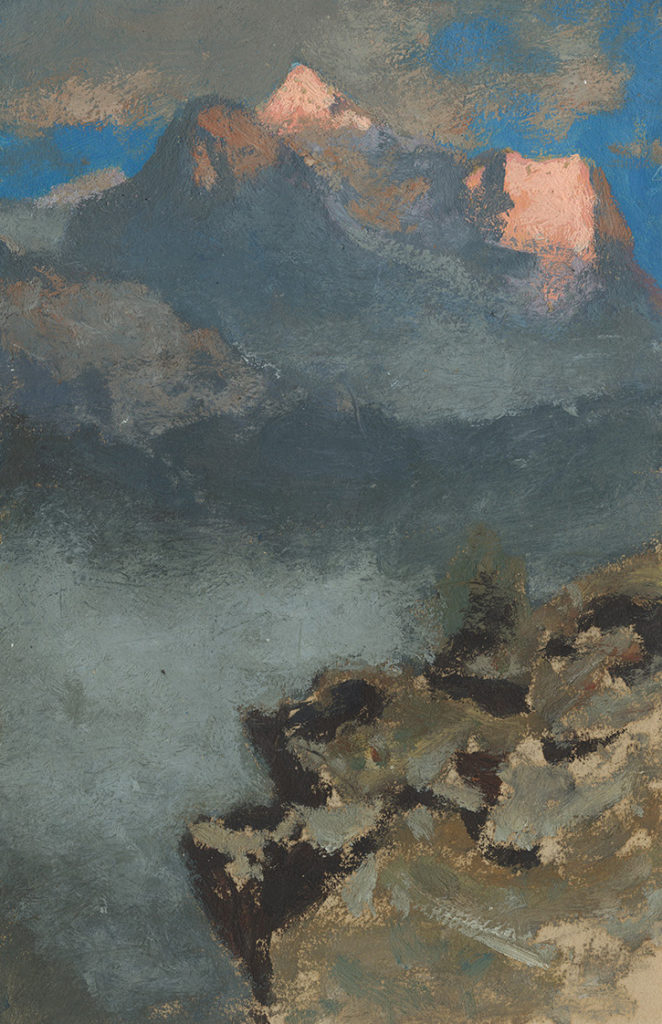Spektakuläres Licht im Hochgebirge by Stanislaus von Kalckreuth is a perfect example of the “Hochgebirgsmalerei”, literally “High mountain painting”. It was during his study expeditions to the Alps and the Pyrenees from 1848, that the artist dedicated his work to this genre. Between 1846 and 1849, his Master, Johann Wilhelm Schirmer at the Düsseldorf Academy already encouraged him in this direction. The high mountain painting marked a shift in the representation of nature originated from the works of 18th century Swiss painter Caspar Wolf. His modern approach, aiming at substituting the dramatic and terrifying face of the mountain for an objective description, forecasted in 1830 the return to more realism in the German landscape painting. If Wolf had been the pioneer in alpine landscapes, von Kalckreuth was the artist who implemented this genre in Germany. This direct vision of nature was officially recognized when von Kalckreuth became, in 1860, under the patronage of Grand Duke Alexander of Saxe-Weimar, the first headteacher of Weimar Art School. His teaching encouraged the propagation in Germany of Plein-air painting and gathered around him painters such as Arnold Böcklin and Franz von Lenbach.
This “Hochgebirgslandschafter”, which does not constitute a strict realism but rather translates a high altitude feeling, is depicted here in this landscape reflecting the magical luminous atmosphere visible in high altitude. The voluptuous pink impression on the mountaintops contrast with the greyish and stiff rocks in the foreground. Through this artwork and other Alps views including Alpenglühen 1873 (Private collection), the artist wished to render this spectacular environment solely perceptible in these isolated places. The small format of this view increased the intimacy of the landscape: as a small postcard, it opens a window to an immensity. The vertiginous feeling is powerful as one wishes to continue climbing to ascend towards the distant summits the névés of which are illuminated by a pre-sunset pinkish light.







